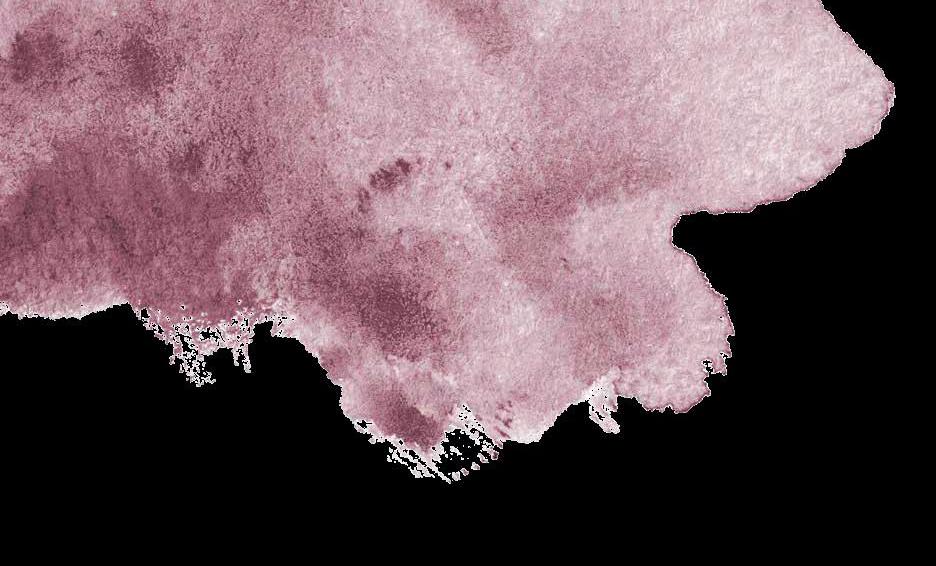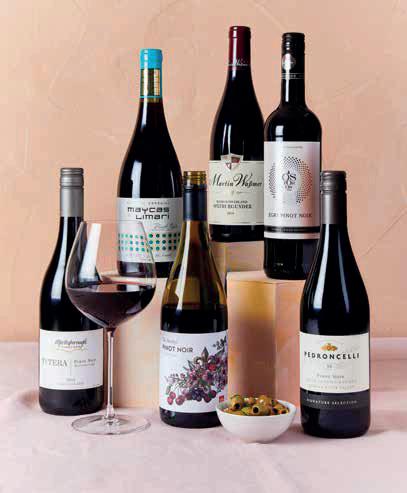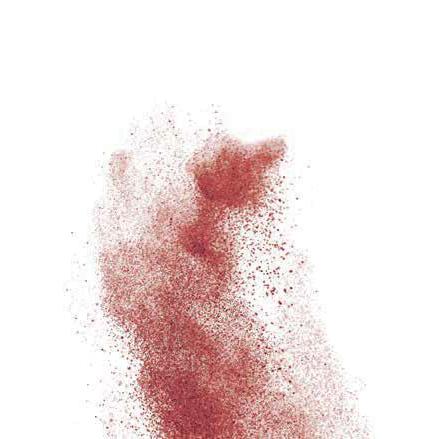
5 minute read
Under the skin - pinot noir
from Head West My Friend - Wine
by Kynect
UNDER THE SKIN How to buy pinot noir
Buyer and Master of Wine student Matthew Horsley gives us a guide to the best regions for pinot noir, one of the world’s most beguiling and charismatic grape varieties
Advertisement
Matthew Horsley
Tricky to grow, difficult to understand and produced in the most marginal of climates; what is the allure of this delicious but enigmatic grape?
Pinot noir, the moody grape
The great Burgundy writer Clive Coates MW likens pinot to Bizet’s temperamental Carmen. Having never seen Carmen I’ll have to take his word for it. But what I do know is that pinot ripens early and hates the cold, both during winter and at flowering. A cold growing season and pinot struggles to ripen, giving mean-tasting and astringent wines; too warm and they lack structure and freshness. If yields are too high the wines are dilute and uninteresting; too low and you won’t be in business very long. Despite its idiosyncrasies however, no grape reflects its terroir better than pinot noir – neighbouring vineyards can produce distinctly different wines, often at drastically different prices. But perfect terroir does not a great pinot make, and it takes a skilled vigneron to unlock pinot’s charms.

What does pinot noir taste like?
‘Blockbuster’ is an adjective rarely used for pinot noir, its pleasure is in its sensual, seductive aromatics, ranging from cherries and redcurrants, to oriental spices, forest floor and mushroom as it ages. Its thin skins produce wines typically pale in colour and medium-bodied. But that’s not to say pinot doesn’t pack a punch. In the right place and in the right hands it can possess wonderful concentration and intensity of flavour with a structure that allows pinot to age magnificently. Great pinot can sing while young and old, a rarity among great red wines.
The Pinot Essentials mixed case makes a delicious introduction to this charismatic grape
Where is it grown?
Burgundy is pinot noir’s homeland, shining most brightly in the Côte d’Or. While the region is complicated, there are four tiers to keep in mind – Bourgogne (using grapes from across the Burgundy region), Villages (from a named village), premier cru (from a named premier cru vineyard), and grand cru wines (from a named grand cru vineyard). ‘So, a grand cru is better than a premier cru wine?’ Well… not exactly. ‘But Village wines are always cheaper than premier cru wines, right?’ Wrong. ‘So how do I know what to buy?’ Good questions… Burgundy is about the land, but most importantly it’s about the people. We recommend starting by tasting by producer, finding out whose wines you like and going from there. This is part of the appeal!




But what about outside Burgundy?
In Alsace the theme of terroir continues with a patchwork of soils, but production methods often play a greater role in determining style, the wines typically spending time in large old oak barrels to bring wonderful purity of fruit. In Germany, where pinot noir is known as spätburgunder, key regions such as Baden give richly fruited pinot that can develop savoury character at an early age. The USA's west coast dominates production thanks to the cooling influence of the Pacific. Styles range from firm, fresh and saline in the northern regions of Oregon and Sonoma Coast, to richer, fuller and darker fruited in the southern areas such as Santa Barbara.
The Pacific plays a key role in Chile too and Limarí, with its limestone soils, is home to some of Chile’s finest, more mineral styles of pinot noir. South Africa, often seen as the most traditional of the new world pinot producers, relies on cool sites and high-quality French oak to give wines of structure with savoury notes and wonderfully ripe fruit. A smart first stop outside Burgundy. In Australia there’s a trend towards pure, pale coolclimate styles from regions like Mornington Peninsula and Tasmania. Here the wines give redcurrant and cherry flavours moving to oriental spices with age.
New Zealand pinot generally divides in two: red-fruited and savoury styles from coastal regions such as Martinborough and Marlborough, or Central Otago’s fuller bodied and dark-fruited. Both are equally delicious and offer some of the finest pinot outside of Burgundy.
TRY
If you’re inspired to unlock the wonders of pinot noir, why not explore the grape via our mixed cases? Whether you’re a newcomer to the pleasures of pinot or a longtime lover of the grape, the selections are designed to tick all boxes.
All wines are also available to buy individually. Visit thewinesociety.com/1874
The Pinot Essentials case
A delicious introduction to this most fascinating of grape varieties, this six-bottle selection features one bottle each of the following wines.
Southern France: The Society's French Pinot Noir 2019
Hungary: Pinot Noir, Ostoros 2018 USA: Pedroncelli Russian River Valley Pinot Noir 2018
Chile: Maycas del Limarí Pinot Noir Reserva Especial 2018
New Zealand: Martinborough Vineyards Te Tera Martinborough Pinot Noir 2019 Germany: Spätburgunder, Markgräflerland, Martin Wassmer 2018
£68 | Ref WT-MX2116
Explore Pinot Noir case
Terroir and regionality come to the fore in this six-bottle selection featuring one bottle each of the following wines.
New Zealand: The Society's Exhibition Central Otago Pinot Noir 2019 Australia: Kooyong Massale Mornington Peninsula Pinot Noir 2019
Alsace: Pinot Noir Côte de Rouffach, Muré 2017
USA: County Lines Sonoma Coast Pinot Noir 2018
Burgundy: Domaine Nicolas Perrault, Maranges Premier Cru Clos Roussots 2017
South Africa: Newton Johnson Family Vineyards Pinot Noir, Upper Hemel en Aarde Valley 2018
£132 | Ref WT-MX2130
Premium New World Pinots case
The cream of the crop from some of the new world’s best pinot producers. Featuring two bottles each of the following wines.
South Africa: Hamilton Russell Pinot Noir, Walker Bay 2019 USA: Bergstrom Cumberland Willamette Valley Pinot Noir 2017 Australia: Wineglass Bay Tasmanian Pinot Noir 2018










